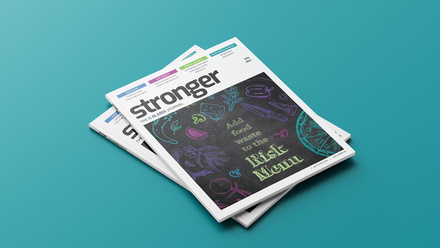Organisations are experiencing an unprecedented rise in complex change programmes. Structural and cultural change within a short time can be unsettling and overwhelming for all employees.
A recent study found that poorly managed change results in disengagement, costing up to 20% of an employee’s salary through absence, lost training days, additional recruitment costs, and reduced productivity, innovation, and creativity.
For neurodivergent individuals in particular, change can bring even greater stress and anxiety. Transitions often introduce unpredictability, disrupting established routines and increasing sensory overload. Unclear roles, shifting responsibilities, and vague or conflicting communication, all of which are common in restructuring programmes, create significant barriers for neurodivergent employees, who thrive on clarity and well-defined expectations.
The cost of poor change management
James (pseudonym), an autistic middle manager in the public sector, excelled in an environment where structure and continuity were prioritised. However, when his department underwent a poorly communicated restructure, he faced overwhelming uncertainty. Contradictory messages, unclear timelines, and sudden role changes left him anxious and demotivated. The final blow came when he was relocated to a new team who did not attempt to understand or accommodate his needs. Feeling unheard and unsupported, James resigned, costing the organisation a highly skilled employee.
Simple steps like clear communication, early engagement, and flexible adjustments could have helped James stay in his job. Poor change management doesn’t just cause stress, it also drives talent away.
Neuroinclusion is an opportunity
Conversely, when neurodivergent employees are engaged early in the change process, they can become key contributors to innovation and problem-solving. Their unique strengths, including; attention to detail, creative thinking, and pattern recognition, offer valuable perspectives that enhance organisational performance and are crucial attributes in organisational redesign.
Ludmilla Praslova, Professor of Organisational Psychology at Vanguard University of Southern California, highlights this in her book The Canary Code: A Guide to Neurodiversity, Dignity, and Intersectional Belonging at Work: “Neuroinclusion principles help all employees thrive and support organisational outcomes … [they] may also help develop broader support for inclusive practices and systemic change.”
Neuroinclusive leadership benefits everyone, including organisations themselves. The 2024 Buckland Report found that autistic employees in particular, are between 45-145% more productive than their neurotypical peers in certain roles.
Take Alex (pseudonym), a public sector officer with ADHD, who faced a surge of public enquiries that overwhelmed her workload. Struggling with task prioritisation and constant context-switching, she voiced her concerns. Instead of dismissing them, her manager listened and recognised how their own lack of clarity had compounded Alex’s challenges. Together, they introduced simple yet effective adjustments: structured task lists, shorter check-in meetings, and batch-processing enquiries. These accommodations allowed Alex to regain control, meet demand effectively, and continue contributing as a valued team member.
Alex’s experience is not isolated; recent research suggests that when employees take the lead in implementation planning, change success rises by 24%, increasing the likelihood that the initiative will be well received and long-lasting.
Practical steps to support neurodivergent employees during change
1. Communicate with clarity and consistency
Use straightforward language and provide information in multiple formats, like written summaries and visual aids.
Offer regular updates to reduce uncertainty and reassure employees.
Clearly outline timelines, expectations, and next steps to provide structure.
2. Provide opportunities for input and feedback
Involve neurodivergent employees early in planning discussions, allowing them to voice concerns and share their perspectives.
Create feedback loops through surveys, one-to-one check-ins, or anonymous suggestion boxes.
Acknowledge and act on feedback to build trust and engagement.
3. Offer flexibility and accommodations
Recognise the need for adjustments, such as quiet workspaces, workload pacing changes, or additional processing time.
Provide tailored support, such as mentoring or coaching, to help individuals navigate transitions effectively.
Train managers to understand neurodivergent needs and provide appropriate support.
4. Optimise neurodivergent strengths
Assign tasks that align with individuals’ strengths, such as analytical thinking, problem-solving, or creative innovation.
Encourage collaboration across teams to integrate diverse perspectives into the change process.
Showcase success stories of neurodivergent employees thriving during transitions to foster an inclusive culture.
You don’t need full consensus to drive meaningful change. Research shows that even with just 25% of employees on board (at any level) real progress can happen. By fostering a neuroinclusive approach through clear communication, structured processes, and meaningful engagement, organisations empower neurodivergent employees to thrive. The result is a stronger, more innovative, and resilient workforce.



